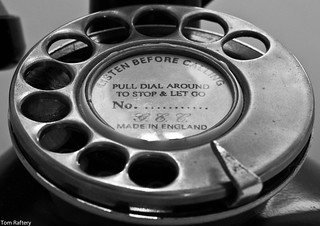I’m moderating a panel discussion on social media and utilities at next week’s SAP for Utilities event in Copenhagen. My fellow panelists will include two representatives from utility companies, and one from SAP.
This is not new ground for me, I have given the closing keynotes at the SAP for Utilities in San Antonio in 2011 and the SAP for Utilities event in Singapore in 2012, both times on this topic.
In my previous talks on this topic I start out talking about how utilities have started to use social media for next generation customer service – this is an obvious use case and there are several great examples of utilities doing just this.
However, there are also other very compelling use cases for social in utilities. In the US over one third of the workforce is already over 50 years old, and according to the US Bureau of Labor Statistics 30-40% of the workforce will retire in the next 10 years. This is not confined to the US and so recruitment and retention are topics of growing concern for utilities.
Now, utilities are rarely seen by young graduates as a ‘cool’ place to work. But this can change. Remember a couple of years back when Old Spice was the cologne your grandad might wear? Old Spice rolled out a social media campaign with a superb series of YouTube ads (the first of which has been viewed 45 million times). In the month which followed their sales went up 100%, and a year later their sales were still up 50%.
Videos like the one above produced by Ausgrid, while not about to rival Old Spice for viewership, do show a more human and appealing side of the company to any potential employees.
Also, when I ask utility companies whether they allow employees to access social media from their work computers, the majority of times the answer is no, or limited. Even if only from the perspective of retaining good employees, this has to change. Today’s millennials are far more likely to use social media as a way to network and find information online (see chapter four of this three year old Pew Research study on Millennials [PDF] for more on this). Blocking access to social media sites, especially for younger employees, is analogous to putting a rotary dial phone on their desk, with a padlock on the dial. Don’t just take my word for it. Casey Coleman, the CIO of the U.S. General Services Administration said recently:
Twitter is a primary source to gather information about changes in my industry. It helps the organization stay current with the latest trends and thinking.
Blocking employees access to social media stifles them from doing their job effectively, and any employee who feels that s/he is not being allowed to do their job properly won’t be long about looking for a new one.
Social media can also be used internally as a means of retaining knowledge from retiring workers, and as a way of making employees more productive using internal social collaboration tools (Jam, Huddle, Chatter, etc.).
Finally, as I’ve mentioned before, with the rise of mobile usage of social media, there is now the ability to tap into social media’s big data firehose in realtime to improve on outage management.
There are bound to be more uses of social media (real or potential) that I’m missing – if you can think of any, please leave a comment on this post letting us all here know.
Also, the panel discussion is on next Friday April 19th at 3pm CET – we’ll be watching the Twitter hashtag #SocialUtils. If you have any questions/suggestions to put to the panel, leave them there and we’ll do our best to get to them.


